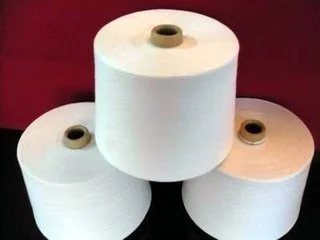In the textile industry, the demand for high-quality fabrics has led to the development of various innovative materials. One such material that has gained significant popularity is Modal yarn. ASIN TEX's high quality Modal yarn is known for its superior softness and comfort, making it a popular choice in the fashion industry and home textiles. Made from natural wood pulp, this yarn has good breathability and moisture absorption, can effectively regulate body temperature, and provide an excellent wearing experience. Whether it is making exquisite clothing or soft bedding, ASIN TEX's Modal yarn can add luxury and durability to the product, satisfying consumers' pursuit of high-quality life.

Understanding Modal Yarn
Modal yarn is a type of regenerated cellulose fiber made from beech tree pulp. It is classified as a semi-synthetic fiber, which means it is derived from natural materials but undergoes significant processing to create the final product. Modal is often praised for its luxurious feel, similar to silk, and its ability to drape beautifully, making it a popular choice for high-end fashion and home textiles.
The Raw Materials: Beech Trees
The journey of high quality Modal yarn begins with the raw materials, primarily beech trees. Beech trees are chosen for their sustainable properties; they grow quickly and require less water compared to other trees used for fiber production. The wood is harvested and processed to extract cellulose, which is the primary component used to create Modal fibers.
The sustainability of beech trees is a crucial factor in the production of Modal yarn. Many manufacturers source their wood from certified forests, ensuring that the harvesting process does not harm the environment. This commitment to sustainability is a significant selling point for high-quality Modal yarn, appealing to eco-conscious consumers.
The Production Process
The production of high quality Modal yarn involves several key steps, each of which plays a vital role in determining the final quality of the yarn.
1. Pulping
The first step in the production process is pulping, where the harvested beech wood is chipped and treated with chemicals to break down the lignin and hemicellulose, leaving behind pure cellulose. This process can vary depending on the manufacturer, but the goal is to produce a high-quality pulp that will yield superior Modal fibers.
2. Dissolving
Once the cellulose pulp is obtained, it undergoes a dissolving process. The pulp is mixed with a solvent, typically sodium hydroxide, to create a viscous solution known as viscose. This step is crucial, as the quality of the viscose solution directly impacts the quality of the final Modal yarn.
3. Spinning
The next step is spinning, where the viscose solution is extruded through spinnerets to form continuous filaments. These filaments are then solidified through a coagulation bath, which helps to create the desired fiber structure. The spinning process can be adjusted to produce different denier (thickness) of the yarn, allowing manufacturers to create a variety of products.
4. Washing and Drying
After spinning, the newly formed fibers are washed to remove any residual chemicals and impurities. This step is essential for ensuring the softness and purity of the Modal yarn. Once washed, the fibers are dried to prepare them for the next stage of production.
5. Cutting and Baling
Once the fibers are dried, they are cut into staple lengths and baled for storage or further processing. At this stage, manufacturers can also blend Modal fibers with other materials, such as cotton or polyester, to create blended yarns that offer unique properties and characteristics.
Quality Control
Throughout the production process, quality control measures are implemented to ensure that the Modal yarn meets high standards. This includes testing for strength, colorfastness, and softness. High quality Modal yarn is characterized by its smooth texture, vibrant colors, and durability, making it suitable for a wide range of applications.
The Final Products
High quality Modal yarn can be transformed into a variety of finished products, each showcasing the unique properties of the fiber. Some of the most common applications include:
1. Apparel
Modal yarn is widely used in the fashion industry for creating garments such as dresses, blouses, and activewear. Its softness and breathability make it an ideal choice for clothing that is comfortable to wear, while its drape adds an elegant touch to designs.
2. Home Textiles
In addition to apparel, high quality Modal yarn is also used in home textiles, including bed linens, towels, and curtains. The luxurious feel of Modal enhances the overall aesthetic of home decor, while its moisture-wicking properties make it practical for everyday use.
3. Eco-Friendly Products
With the growing demand for sustainable products, high-quality Modal yarn is increasingly being used in eco-friendly textiles. Brands that prioritize sustainability often choose Modal due to its renewable raw materials and environmentally friendly production processes.
Conclusion
The production of high quality Modal yarn is a complex process that begins with sustainable raw materials and culminates in luxurious finished products. From the careful harvesting of beech trees to the intricate spinning and quality control measures, each step is designed to ensure that the final yarn meets the highest standards of quality and sustainability.
As consumers become more conscious of their purchasing decisions, the demand for high quality Modal yarn is likely to continue to grow. Its unique properties, combined with a commitment to sustainability, make it an attractive option for both manufacturers and consumers alike. Whether used in fashion or home textiles, ASIN TEX high quality Modal yarn represents a perfect blend of luxury and eco-friendliness, paving the way for a more sustainable future in the textile industry.
http://www.asinyarn.com/the-production-process-of-high-quality-modal-yarn.html
